
From the moment that engine got mounted onto a bicycle to create the first motorcycle, men have tried to make these contraptions go faster. Quite why we have been obsessed with speed, I really don’t know. Ego and testosterone I suppose! As volatile a mix as nitromethane! Two German gents, Hildebrand and Wolfmiller, went one better then old Gottlieb Daimler (credited with building the first ever motorbike in 1888) when they built a 1500 cc liquid cooled twin cylinder bike that managed 25 mph (40kph). Scarily fast when you consider that the brake was a metal bar that dragged on the ground to eventually bring the whole plot to a stop.
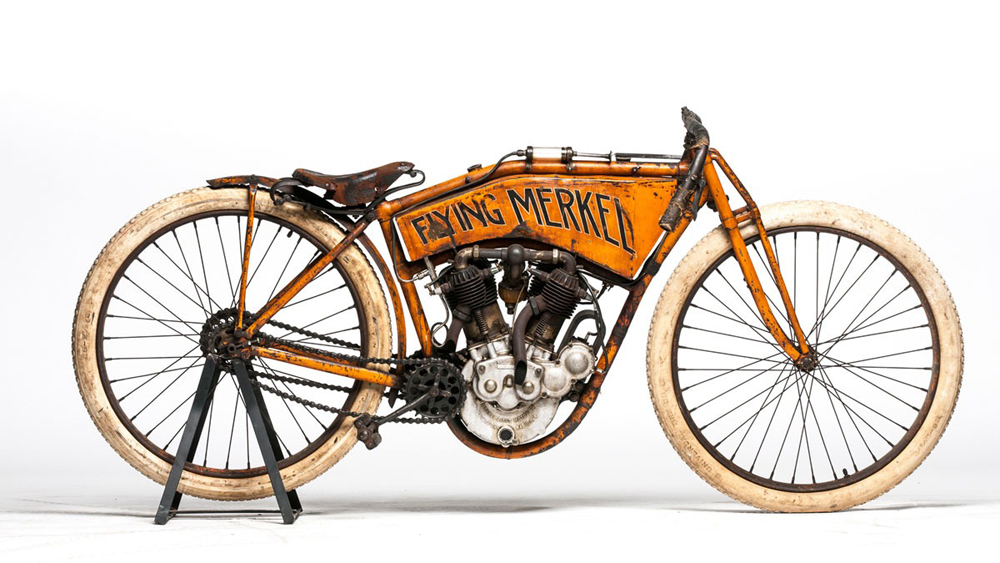
The Americans really got things going when, in the early 1900’s, Indian, Harley Davidson and Flying Merkel started vying for the bragging rights to building the worlds fastest motorcycle. The Flying Merkel may have provided inspiration for KTM’s of the future as they were painted bright orange and had V-twin engines. In fact V-twins have powered Harleys ever since! The “Indian” was resurrected by Polaris, who added the iconic brand to their range of four wheelers, snow bikes and Victory motorcycles. A brand new Indian Scout was launched at the 2014 Sturgis Rally in the States. Back in the day the Scout made the Indian a household name in America as Indians performance model. It was popular as a “Wall of Death” racer. A popular fairground attraction was watching riders on Indian Scouts blast around a cylindrical wooden drum with centrifugal force pinning them to the vertical walls. That darned testosterone again!
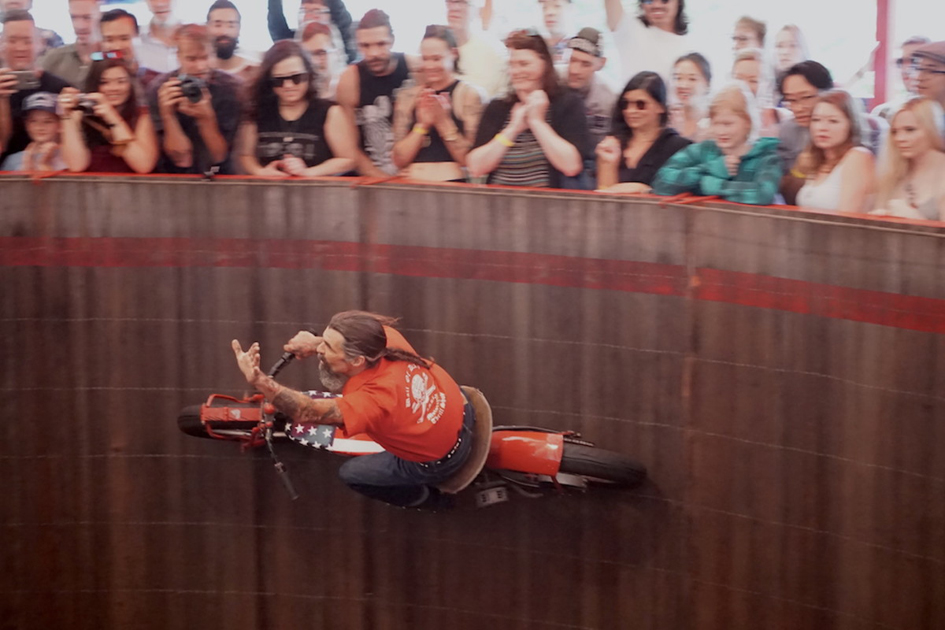
Lets get back to the 70’s to explore what was happening to motorcycles in the quest for speed and world records. Drag racing! Racing over a quarter mile from a standing start (Not men dressed as ladies running with their skirts up) Gotcha! The wildest class was known as “Top fuel”. 8 inch M + H slicks, or “gumballs”, mounted on custom built MTC rear wheels, would distort, then spin wildly off the line, desperately scrabbling for traction as nitromethane fuelled engines belched flame from stubby unsilenced exhausts. The rider, stretched out flat on top of his monster, would desperately try to keep the bike straight and “hooked up”, drag racer speak for rear wheel traction. This was made all the more difficult by the accelerative g-force draining the blood from the brain as the roaring, flame belching, tyre spinning beast left a 100 meter black, torque induced, rubber footprint as proof of it’s passing.

The men that ruled motorcycle drag racing in the early mid seventies were, Joe Smith, T.C Christenson and Russ Collins. Honourable mention must go to Terry Vance, Boris Murray, Danny Johnson, Marion Owens and Sonny Routt. All legends in their time. “How fast did these bikes go through the quarter?” you may ask. Drag racers strive for two numbers. ET, or elapsed time is the absolute measure. How long does it take from when the light on the “Christmas tree” goes green to when the bike breaks the beam at the end of the quarter mile? The second, less important number, but certainly allowing for considerable bragging rights, is the terminal speed. The maximum speed that the bike attained through the quarter mile. In early 1976 the World record ET by a top fuel bike was posted at 7.861 seconds. The highest terminal speed? 182.55 mph.

The venerable Colt sixgun may have ruled at the showdown at the OK Corral, or on the streets of Dodge. We saw different weapons of choice at Ontario, Pomona, Bakersfield, Englishtown, Indianapolis, Fremont, Bowling Green and National Trail in Columbus Ohio. Innocuous names for the venues around the States and Canada that witnessed the tyre shrieking, smoking cacophony of sounds and sights of Top Fuel drag racing!
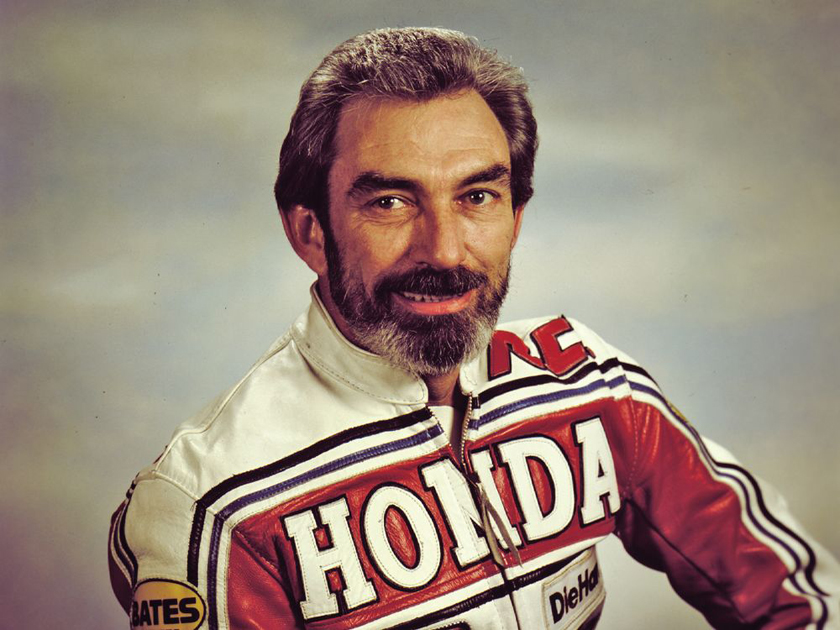
Strangely enough the man who consistently allowed Top fuelers to run in the seven’s and eights was a fellow named Marvin Rifohin. “Who the flip was he?” you may ask… Well, Marvin was head honcho at M+H Tire Company. The introduction of six inch and eight inch wide racing skins immediately rendered single engine drag bikes obsolete. At last the huge power of double and even triple engine monsters could be harnessed. Riders could “hook up” that rear gumball and slingshot down the quarter in previously undreamt of elapsed times. Even to this day traction has been the Holy Grail for motorcycle performance in general. In the past it was tyre technology and to a lesser extent, engine design which sought to harness all the available traction. Today these two have been joined by electronic traction control wizardry, but more of that some other time. Lets get back to drag racing, 70’s style.
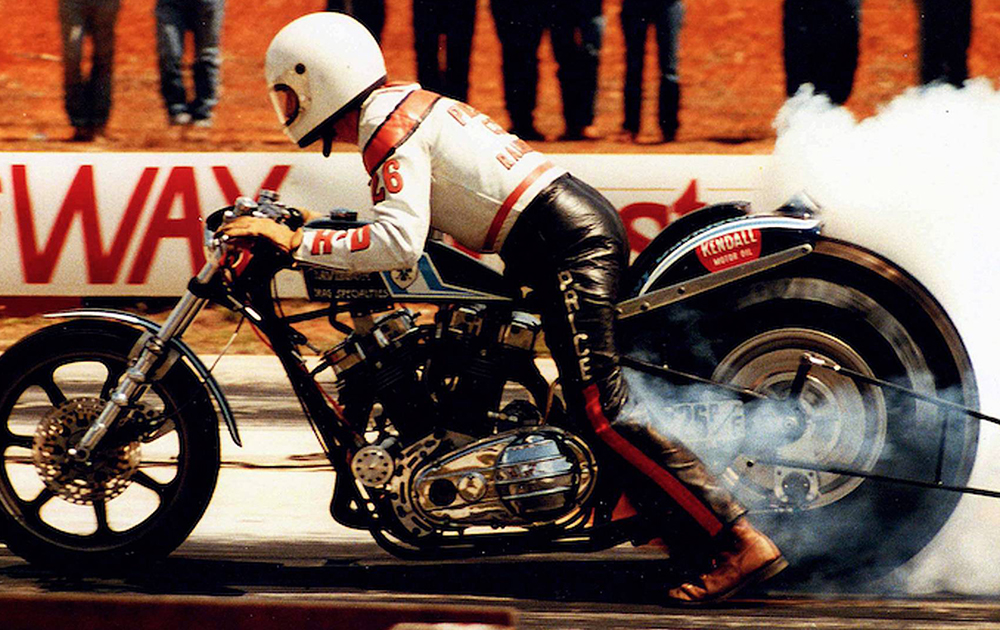
Joe Smith learned his trade with a single engine Harley 74 powered bike. Marvin blew the head off that box and Joe came to the fight with two enormous Harley 74 engines lashed together in tandem! Long, low and lean, the guttural stutter of the beast firing up was a sound you would not easily forget. The gentle potato – potato beat of a stock Harley was amped into a staccato blast of unbridled power. Radical cam timing and hot drag pipes would ignite unburned fuel and flames belched from the short exhausts, what a sensory overload! Aptly dubbed “The Sledgehammer”, there was nothing subtle about Joe Smith’s Harley 74 double.
A familiar sight in the opposing lane that would strike fear into the heart of the opposition was the diminutive T.C. Christenson stretched out on the double engine, John Gregory tuned Norton. This bike went by the wishful, yet prophetic name, “Hogslayer” (for the uninitiated, Harleys have always been known as “Hogs”). The Norton engine bike, with it’s engines of British origin, brought diversity to the start line. Running a mix of 95% nitro, 2,5% propylene oxide and 2,5% methanol through those Norton mills produced sparkling performance. Probably the most consistent of the three bikes featured here, it was testimony to T.C’s brilliance and Gregory’s technical acumen. Joe Smith’s Harley Davidson motors displaced over 3 litres. Hogslayers’ Norton motors were tiny by comparison, running 810cc per engine. despite a wicked state of tune, and standard 1960 Norton Atlas conrods, the Gregory built bike drew from the vast well of knowledge acquired with their earlier single engine Norton drag bike. Consistent and fast, the stuff of which champions are made.
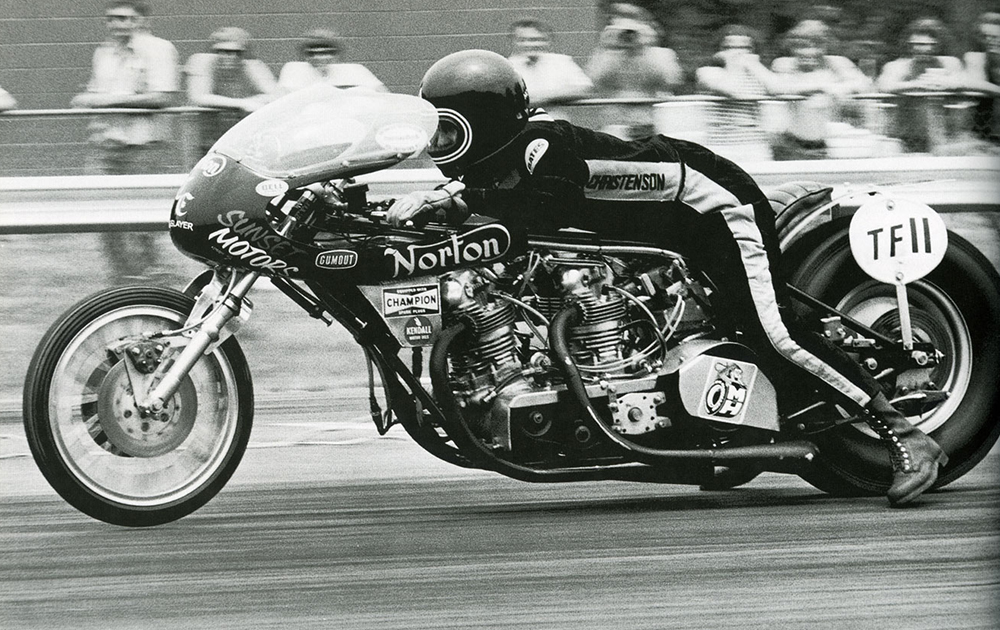
If you think that bikes are impressive, and they are, you will be utterly gobsmacked by the Russ Collin creation! “Atchinson, Topeka and Santa Fe” was the name Russ gave to his three engine Honda four powered bike. Yes Lavergne, you heard right! 3288cc, 12 cylinders, 850 pounds of fuel injected fury, pumping out almost 500 horse power! The Honda was the bike that was the first into the 7’s. 7.861 seconds at Ontario. New elapsed time world record. Can you imagine that spectacle? 400 horse power being dumped into and 8 inch M+H slick with 850 little gravity gremlins trying to give it to the ground. That massive gumball distorting, spinning, smoking as it deposits a strip of rubber on the tar. Accompanied by the shriek of three nitrous fuelled fours building up to an 11,000 rpm crescendo! I told you the 70’s were heady days indeed!





